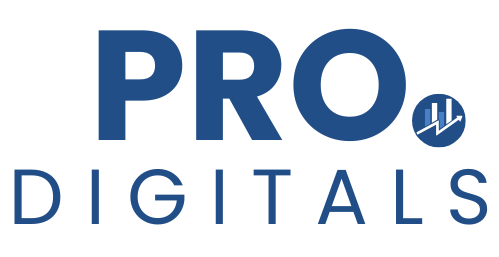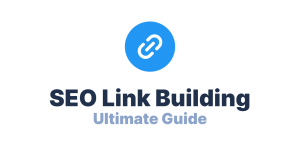Link building isn’t a numbers game—it’s a strategy game. Blindly chasing backlinks without tracking the right link building metrics is like trying to assemble IKEA furniture without the instructions. Frustrating, messy, and likely to collapse under scrutiny.
To dominate SEO, you need more than just links. You need intentionality. That’s where link building KPIs come in. These metrics reveal what’s working, what’s wasting your time, and where to double down. Below, we’ll dissect the most critical link metrics, why they’re non-negotiable, and how to leverage them for maximum impact.
1. Domain Authority (DA) & Domain Rating (DR): The Power Players
Not all websites are created equal. Some carry clout. Others? Not so much. DA (Moz) and DR (Ahrefs) quantify this influence on a 1-100 scale.
Why These Metrics Matter More Than You Think
- High DA/DR links act like SEO steroids. A single link from a site like Forbes can outperform 50 links from obscure blogs.
- Niche relevance trumps raw power. A DR 30 site in your industry might drive more conversions than a DR 80 site about unrelated topics.
Common Pitfalls to Avoid
- Tunnel vision on high scores. Obsessing over DA/DR alone ignores relevance—a fatal flaw.
- Ignoring “smaller” gems. A passionate niche blog with engaged readers can be a goldmine, even with modest metrics.
Pro Tip: The 80/20 Rule
Focus 80% of effort on high-authority, relevant links. Use the remaining 20% to cultivate relationships with rising niche sites.
2. Referring Domains: The Credibility Multiplier
One link from 100 sites beats 100 links from one site. That’s the magic of referring domains—the unique sites linking to you.
Why Diversity Matters
Google’s algorithm rewards breadth. A wide array of referring domains signals trust. It’s like having 100 people vouch for you at a job interview versus one person repeating the same praise 100 times.
Red Flags to Watch
- Sudden spikes. A flood of new domains in weeks? Could be spam. (Google’s Penguin update still haunts shady link builders.)
- Low-quality sources. Links from PBNs or spam directories? More harmful than helpful.
Actionable Strategy
Aim for a steady drip of referring domains. Tools like Ahrefs or SEMrush can track this growth visually—look for a smooth upward trend, not jagged spikes.
3. Anchor Text Distribution: The Silent SEO Signal
Anchor text—the clickable words in a link—is a telltale sign of “natural” vs. “forced” link building.
The Three Anchor Types You Need to Know
- Exact-match: “Best running shoes” (Powerful but risky in excess.)
- Branded: “Nike’s latest release” (Safe and brand-affirming.)
- Generic: “Read more here” (Neutral but low-value.)
Why Balance is Non-Negotiable
- Over-optimization penalty. Stuffing exact-match anchors screams manipulation. Google’s algorithm detects this faster than a viral TikTok trend.
- Natural profiles win. A mix of branded, partial-match, and generic anchors mimics organic growth.
Quick Fix
Audit your anchor text with Ahrefs. If exact-match anchors exceed 5%, diversify immediately.
4. Link Quality: The Trifecta of Spam Score, Traffic, and Relevance
A link’s value hinges on three pillars:
- Spam Score (Moz): Rates toxicity. Above 30%? Tread carefully.
- Traffic: Links from sites with real visitors > links from ghost towns.
- Relevance: A tech blog linking to your SaaS startup? Perfect. A pet blog? Not so much.
Real-World Example
Imagine you sell eco-friendly office supplies. A link from Fast Company? Priceless. A link from Extreme Skateboarding Weekly? Probably not moving the needle.
Tool Recommendation
Use Moz’s Link Explorer to vet spam scores. Pair it with SimilarWeb to gauge traffic—free tier works for quick checks.
5. Link Velocity: The Growth Rate That Keeps Google Happy
Link velocity measures how quickly you’re acquiring backlinks. Too fast? Suspicious. Too slow? Ineffective.
The Goldilocks Zone
- Organic growth: 10-20 new links/month for most sites.
- Viral exceptions: If The New York Times features you, expect a spike—just don’t force it.
Danger Zone
Buying links or using shady PBNs creates unnatural spikes. Google’s algorithms are smarter than ever—they’ll notice.
6. Dofollow vs. Nofollow Links: The SEO Balancing Act
- Dofollow: Passes “link juice” (SEO value).
- Nofollow: Doesn’t pass juice, but can drive traffic and credibility.
Why You Need Both
- Natural profiles include nofollows. Even Wikipedia uses them.
- High-authority nofollows still matter. A nofollow link from Reddit can send targeted traffic.
Pro Tip
Aim for a 70:30 dofollow-to-nofollow ratio. It mimics organic link profiles.
7. Link Placement: Context is King
Where your link lives on a page affects its weight.
High-Value Placements
- In-content links: Embedded naturally within articles.
- Guest post bios: “Written by [You]” with a link.
Low-Value Zones
- Footers/sidebars: Often templated and ignored by algorithms.
- Spammy directories: Just don’t.
8. Lost & Broken Links: The Silent SEO Killers
Broken backlinks = wasted equity. Tools like Ahrefs can find these leaks.
How to Reclaim Lost Value
- Identify 404s: Use Ahrefs’ Broken Backlinks report.
- Recreate content: Republish the missing page with a 301 redirect.
- Outreach: Politely ask linking sites to update the URL.
9. CTR from Backlinks: The Engagement Litmus Test
If no one clicks your links, does SEO even matter?
Why CTR Matters
- High CTR: Signals compelling anchor text/content.
- Low CTR: Indicates poor relevance or placement.
Quick Win
Test different anchor texts in guest posts. Track clicks with UTM parameters.
10. Competitor Backlink Gaps: Your Free Roadmap
Why reinvent the wheel? Steal—er, borrow—your competitors’ links ethically.
How to Exploit Gaps
- Run a gap analysis: Ahrefs’ “Site Explorer” shows who links to rivals but not you.
- Prioritize high-DA targets: Pitch guest posts or create better content.
Wrapping It Up (Without Saying “In Conclusion”)
Link building without tracking link metrics is like driving blindfolded. You might move forward, but you’ll crash eventually.
The TL;DR Cheat Sheet
- DA/DR: Quality over quantity.
- Referring domains: Diversity = trust.
- Anchors: Keep it natural.
- Quality: Avoid spam at all costs.
- Velocity: Steady wins the race.
- Dofollow/nofollow: Balance is key.
- Placement: Context matters.
- Broken links: Fix them yesterday.
- CTR: Optimize for clicks.
- Competitor gaps: Learn from their wins.
Now, go forth and build links—intelligently. Because in SEO, what gets measured gets managed. And what gets managed gets results. 🚀

